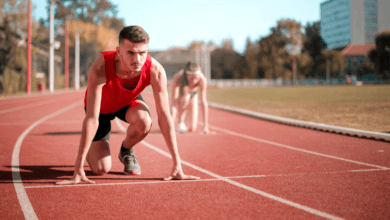The Artistry and Strength of Gymnastics Rings in the Olympics

The Gymnastics Rings Olympics, a hallmark of the Olympic Games, showcase a blend of power, precision, and artistic grace. Known for demanding immense upper-body strength and impeccable technique, this apparatus highlights the pinnacle of athleticism. From its origins to the modern Olympic stage, the gymnastics rings remain a captivating event.
The History of Gymnastics Rings in the Olympics
The gymnastics rings event traces its roots back to the early 20th century when it was introduced as part of men’s artistic gymnastics. First featured in the 1924 Paris Olympics, the event has evolved into one of the most challenging and admired disciplines in the gymnastics repertoire. Initially referred to as “still rings,” the apparatus continues to test athletes’ physical and mental limits.
The Structure of Gymnastics Rings

The gymnastics rings consist of two circular wooden rings suspended from overhead cables. These rings are adjustable in height, typically positioned 5.8 feet above the ground. The apparatus demands a combination of controlled movements, static holds, and dynamic transitions to execute routines effectively. Athletes use chalk to enhance their grip, ensuring stability during demanding elements.
Key Elements of a Rings Routine
Performing on the gymnastics rings requires athletes to execute a series of elements, including:
- Strength Elements: Static holds such as the iron cross, maltese, and planche demonstrate unparalleled upper-body strength.
- Swing Elements: Smooth transitions and swings highlight control and rhythm.
- Dynamic Elements: Flips, twists, and dismounts add flair and difficulty to routines.
The combination of these components ensures that every routine is a testament to the gymnast’s skill, creativity, and preparation.
Scoring Criteria in the Rings Event
Judging in the gymnastics rings event adheres to stringent criteria:
- Execution Score: Evaluates the precision and cleanliness of movements.
- Difficulty Score: Reflects the complexity and risk of the routine’s elements.
- Artistry and Presentation: Considers the overall flow and presentation of the performance.
Athletes strive for a balance between high-difficulty elements and flawless execution to achieve top scores.
Notable Gymnasts in Olympic Rings History

The rings event has seen numerous iconic performances over the years. Legends like Yuri Chechi, known as the “Lord of the Rings,” and Arthur Zanetti, the first Brazilian gymnast to win Olympic gold, have left indelible marks on the sport. Their achievements inspire a new generation of athletes to pursue excellence on this demanding apparatus.
Training for the Gymnastics Rings
Preparing for the gymnastics rings requires rigorous training that focuses on strength, flexibility, and technique. Key training components include:
- Strength Conditioning: Targeted exercises such as pull-ups, dips, and isometric holds build foundational strength.
- Flexibility Training: Stretching routines enhance mobility, enabling athletes to perform intricate movements.
- Technical Drills: Practicing specific elements and transitions ensures precision during routines.
The Role of Technology in Modern Rings Training
Technological advancements have revolutionized training for gymnastics rings. High-speed cameras, motion analysis software, and virtual simulations help athletes refine their techniques and identify areas for improvement. Coaches leverage data-driven insights to design personalized training programs, maximizing performance potential.
Inclusion and Accessibility in Gymnastics Rings
While the gymnastics rings event is traditionally part of men’s artistic gymnastics, efforts are underway to make the discipline more inclusive. Promoting equal opportunities and expanding participation at all levels fosters diversity and innovation in the sport.
Frequently Asked Questions About Gymnastics Rings

Q1: What materials are gymnastics rings made of?
Gymnastics rings are typically crafted from high-quality wood or composite materials to ensure durability and a firm grip.
Q2: How are routines on gymnastics rings judged?
Judges evaluate routines based on execution, difficulty, and artistic presentation. Scores reflect the balance between technical precision and creative expression.
Q3: Can beginners train on gymnastics rings?
Yes, beginners can train on gymnastics rings by starting with basic exercises and gradually progressing to more advanced movements under proper guidance.
Q4: Are gymnastics rings included in women’s artistic gymnastics?
No, gymnastics rings are exclusively part of men’s artistic gymnastics. However, women’s gymnastics includes events like uneven bars and balance beam.
Q5: What is the significance of the iron cross in gymnastics rings?
The iron cross is a signature strength element in gymnastics rings that demonstrates exceptional upper-body strength and control.
The Future of Gymnastics Rings in the Olympics
As gymnastics evolves, the rings event continues to captivate audiences worldwide. Innovations in training methodologies and increased emphasis on inclusivity are shaping the future of the sport. The gymnastics rings remain a testament to the enduring appeal of discipline, artistry, and human potential.
Conclusion
The gymnastics rings symbolize the perfect fusion of strength, precision, and artistry in Olympic gymnastics. From its historical roots to its modern-day significance, this event challenges athletes to push the boundaries of human capability. With advancements in training and a growing focus on inclusivity, the future of gymnastics rings promises to inspire and enthrall generations to come.




